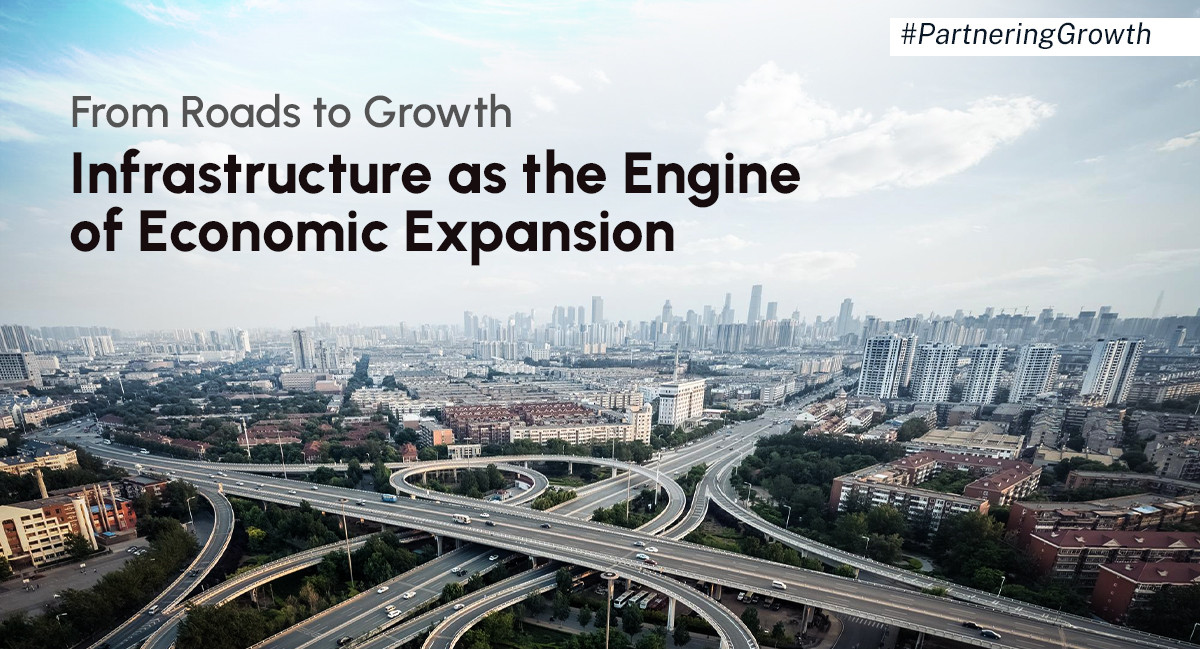


Infrastructure is often called the backbone of an economy, and in India, it truly drives the country’s growth story. Roads, railways, ports, and urban projects do more than just connect places. They connect people, businesses, and opportunities. Each kilometer of highway or rail line built has a ripple effect, linking markets, facilitating trade, and creating jobs across regions.
Roads and Highways Driving Progress
Roads and highways have long been at the core of India’s transportation network, reducing travel time, cutting costs, and enabling businesses to access new markets more efficiently. With the world’s second-largest road network and over 1,46,000 km of National Highways, India continues to expand its connectivity backbone.
Under the Bharatmala Pariyojana, 35 locations had been sanctioned for Multimodal Logistics Parks (MMLPs) as of April 2025. Of these, five sites- Jogigopha, Chennai, Bengaluru, Nagpur, and Indore were approved and under construction, expected to become operational between FY 2025-26 and FY 2026-27. Collectively, these MMLPs are projected to handle around 700 million tonnes of cargo, significantly strengthening supply chain integration and trade efficiency. The Nagpur MMLP, in particular, is strategically located to facilitate regional logistics and boost economic activity in central India.
Railways Boosting Trade and Mobility
Railways complement roads by enabling the efficient movement of goods and raw materials. Freight rail reduces logistics costs, making Indian products more competitive domestically and internationally. High-speed and modern rail services such as Vande Bharat have drastically improved passenger commutes in cities, while reducing congestion and boosting productivity. Regional trade has also flourished as smaller towns get linked to larger commercial hubs, creating new economic corridors and opportunities for communities along the routes.
Ports and Logistics Hubs as Economic Catalysts
Ports and logistics hubs are playing an equally critical role. Modern ports and cargo terminals have been speeding up import-export operations, supporting international trade and attracting global supply chains. Integrated transport infrastructure, combining roads, railways, and ports, ensures that goods move faster, costs are lower, and businesses can operate more efficiently.
Urban Infrastructure and Smart Cities
Urban infrastructure also plays a major role in the overall economic progress of the country. Metro systems, bus rapid transit networks, and smart city projects have helped reduce congestion and travel time, supporting businesses and improving livability.
Modern urban planning, coupled with sustainable practices, is attracting domestic and international investments, creating vibrant, productive cities. These developments also generate employment across multiple sectors- from construction and engineering to logistics and allied industries, multiplying the economic impact.
Challenges in Infrastructure Development
Despite the progress, infrastructure development in India faces its share of challenges. Land acquisition often slows down projects, while regulatory approvals can be time-consuming. Funding gaps, delays in project execution, and coordination across multiple agencies can also affect timelines. Environmental concerns and sustainability requirements add another layer of complexity, requiring careful planning and innovative solutions.
The Road Ahead
The Union Budget 2025-26 allocated ₹11.21 lakh crore (US$128.64 billion) to infrastructure, representing about 3.1% of India’s GDP. Looking forward, India’s infrastructure growth is likely to be shaped by a mix of technology, sustainability, and efficient planning. Smart city initiatives, green buildings, renewable energy integration, and digital monitoring of projects can ensure faster execution and long-term impact. Greater private sector participation, public-private partnerships, and international investment can also help bridge gaps in funding and expertise, accelerating development.